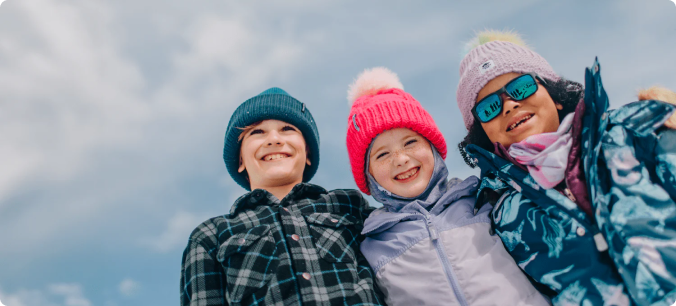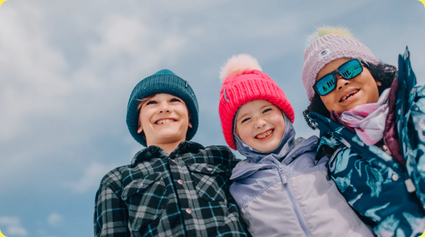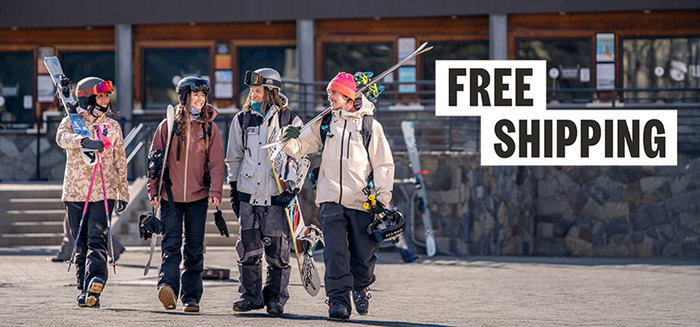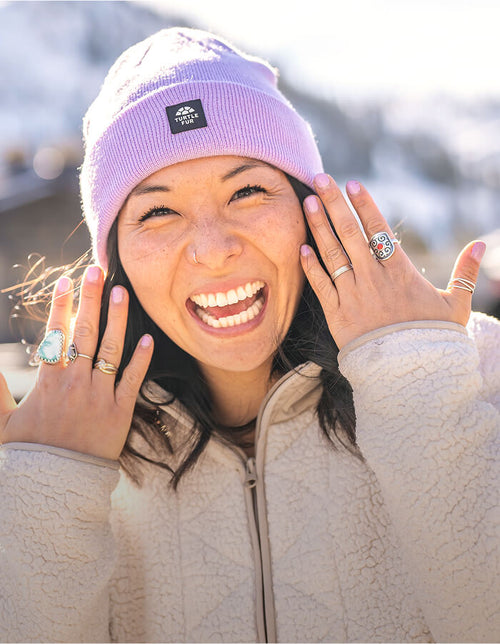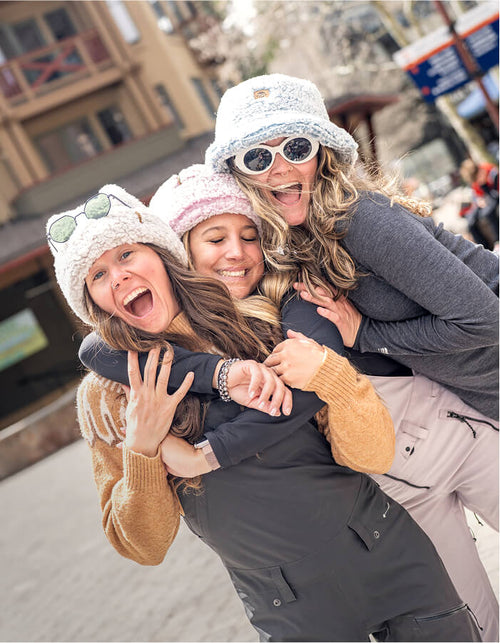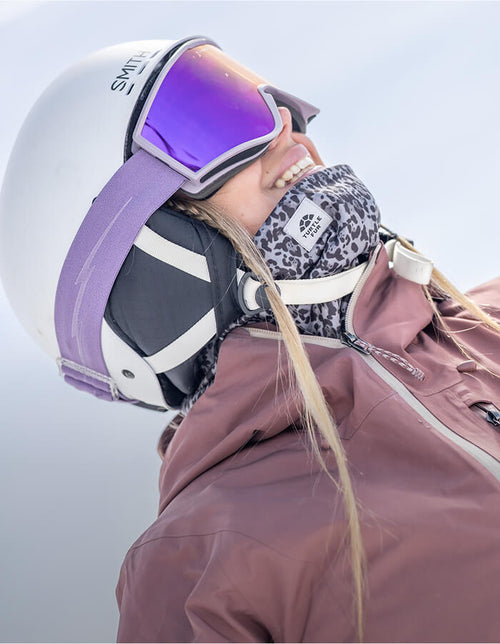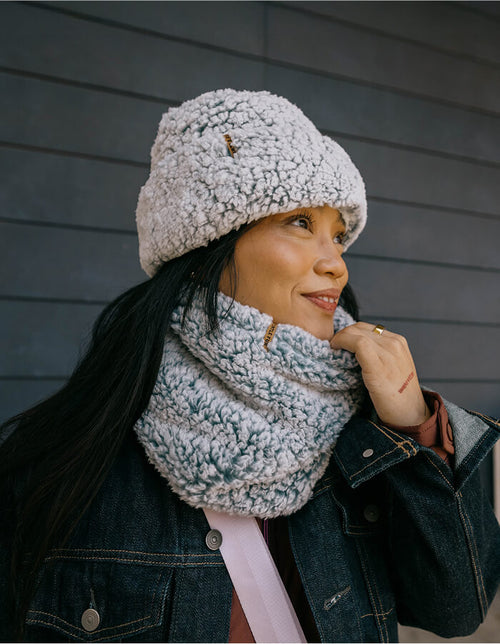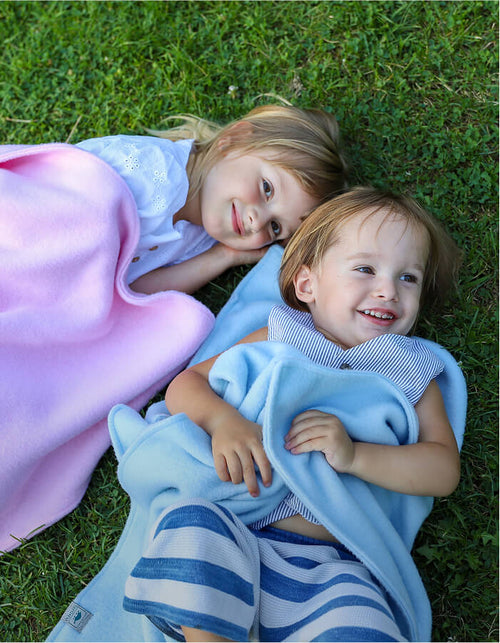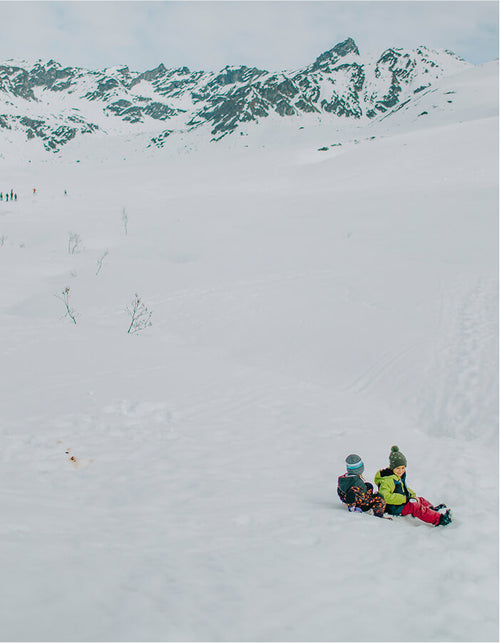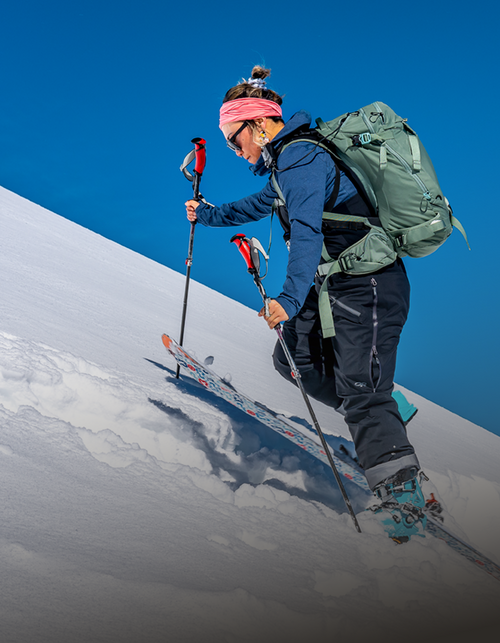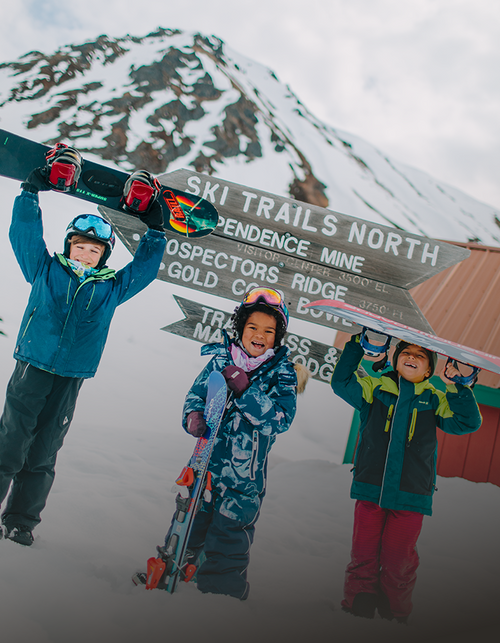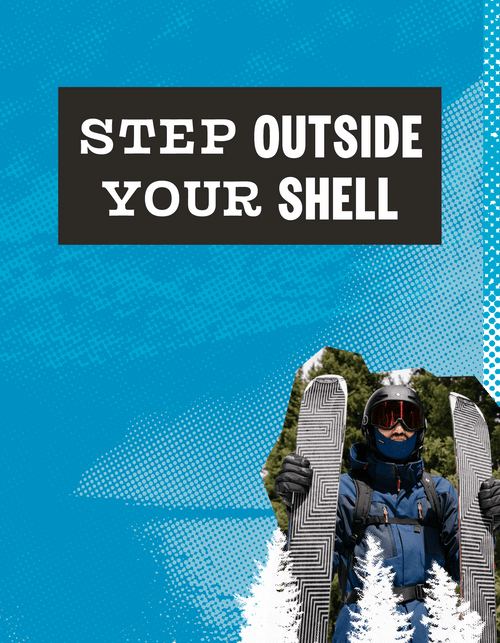Winter Face Protection

The Importance of Winter Face Protection
As temperatures drop and snow days become more frequent, the importance of winter face protection becomes undeniable. To help you stay warm and dry, we’ve compiled a guide to help safeguard your face from the elements, focusing on the warmth, performance, and coziness of Turtle Fur’s winter face protection.
What is a Balaclava?
A balaclava, also commonly known as a ski mask, is a form of cloth headgear designed to expose only part of the face, depending on the style. The term "balaclava" often brings to mind its use in cold weather activities for warmth and protection. However, it's almost synonymous with "ski mask," a term that highlights its popular use in winter sports such as skiing and snowboarding. Both are designed to protect against harsh weather conditions, offering coverage for the head, neck, and face, with openings for the eyes and sometimes the mouth and nose.
Originally named after the Battle of Balaclava during the Crimean War, where such headgear was first noted for keeping soldiers warm, balaclavas have evolved into essential gear for anyone looking to combat the cold. Whether for workwear or recreational activities in freezing temperatures, the balaclava/ski mask provides effective protection from the cold, wind, and sun. Made from various materials, including fleece, wool, and synthetic fibers, these garments offer different levels of insulation and moisture-wicking properties, making them versatile for both professional use and outdoor sports. The adaptability in design, allowing for full or partial face exposure, caters to varying needs and preferences, solidifying the balaclava's place as a staple in cold-weather gear.

How to Pronounce Balaclava?
Pronouncing "balaclava" can seem daunting, but it's quite straightforward when broken down. It is pronounced as /ˌbæl. ˈklɑː.və/. The stress is on the third syllable, with the "a" sounds in the first and second syllables being short, like the "a" in "cat," and the "a" in the third syllable sounding like the "a" in "father." The final "a" is pronounced as the short "a" sound in "sofa."
Benefits & Uses of Balaclava Masks
When it comes to winter face protection, the balaclava mask stands out for its versatility and effectiveness. Designed to offer full coverage, these masks are the shield against the biting cold, windburn, and even unexpected snowfall. Its design allows for flexibility – it can be worn under helmets or hats, making it a go-to accessory for outdoor adventuring or work.

Why You May Need a Balaclava
A balaclava is more than just a piece of winter clothing; it's a versatile accessory designed to provide protection and warmth in various settings. Whether you're braving the cold for work or play, a balaclava can be an essential part of your gear. Here’s why you might need a balaclava for a range of activities:
- Workwear: For outdoor professionals, a balaclava keeps the face and neck protected from frigid temperatures and biting winds, ensuring comfort during long hours spend working outside.
- Alpine Skiing & Snowboarding: On the slopes, a balaclava not only provides warmth but also reduces exposure to UV rays reflected off the snow, enhancing your skiing or snowboarding experience.
- Nordic Skiing: For the endurance test of cross-country skiing, a balaclava helps maintain body heat and prevents cold air from entering, allowing for better respiratory comfort.
- Winter Running, Hiking & Walking: It offers protection against cold winds and preserves warmth, making early morning jogs or late evening hikes more comfortable.
- Snowmobiling: At high speeds, a balaclava protects your face from the cold and prevents frostbite, crucial for long-distance rides.
- Winter Fat Biking: Keeps your face warm and comfortable while tackling snowy trails, ensuring that the cold doesn't dampen your cycling enthusiasm.
- Ice Fishing: In the stationary quiet of ice fishing, a balaclava is invaluable for staying warm and protected against the chill, especially during extended periods outdoors.
For each of these activities, a balaclava serves as a shield against the cold, offering warmth and protection while fitting comfortably under helmets and other headgear. Its adaptability to different environmental conditions and activities makes it an indispensable part of your cold-weather arsenal.

Choosing the Right Balaclava
When the cold season approaches, having the right balaclava is crucial for anyone exposed to the outdoors. Selecting the perfect balaclava facemask involves understanding the specific needs of your activities and the environment. Here's a detailed list of what to look for:
Material: The fabric of your balaclava plays a pivotal role in warmth, breathability, and moisture-wicking capabilities. Options include:
- Wool: Offers excellent warmth and natural moisture-wicking properties.
- Synthetic: Polyester and nylon are common, providing good insulation, drying quickly, and often having windproof and waterproof properties.
- Fleece: Known for its warmth and softness, making it comfortable for long wear, especially in moderate to cold temperatures.
Breathability: Essential for active use to prevent moisture build-up, which can lead to discomfort or even hypothermia in cold conditions. Look for balaclavas designed with breathable panels or fabrics.
Moisture-Wicking: This feature pulls sweat away from the skin, keeping you dry and warm. A must-have for high-energy activities or long workdays outdoors.
Thermal Insulation: For extreme cold, ensure your balaclava has enhanced thermal properties. Thicker materials or balaclavas with double-layered construction offer extra warmth.
Fit and Comfort: A balaclava should fit snugly without being too tight. Look for adjustable features or stretchable fabric to accommodate different head sizes and shapes comfortably.
 Coverage and Design: Depending on your needs, balaclavas come in various designs offering different levels of coverage.
Coverage and Design: Depending on your needs, balaclavas come in various designs offering different levels of coverage.
- Full-face: Covers the entire face and neck, leaving only the eyes exposed.
- Convertible: Can be adjusted to cover or expose different parts of the face and neck, versatile for changing conditions.
- Integrated Goggles: Some models come with or are compatible with goggles to protect against wind and snow.
Windproof and Waterproof: For those exposed to windy or wet conditions, a balaclava with windproof and waterproof qualities can provide an additional layer of protection.
Ease of Maintenance: Consider how easy it is to clean the balaclava, especially if you use it frequently. Machine-washable materials can save time and effort.
UV Protection: If you're planning to be out in the sun, look for a balaclava that offers UV protection to shield your skin from harmful rays.
Style and Color: While functionality is key, choosing a style and color that you like can make wearing your balaclava more enjoyable. Turtle Fur offers a variety of fun colors and patterns that don't sacrifice performance for style.
By considering these factors, you can ensure that your winter face protection is perfectly suited to your needs, providing warmth, comfort, and protection as you tackle the cold.
Other Types of Face Protection: Neck Gaiters & Over Helmet Hoods
Similar to balaclavas, neck gaiters and over helmet hoods also offer versatile solutions to shield against the biting cold, fierce winds, and piercing chill of the winter season. These accessories are pivotal for anyone venturing into the outdoors during colder months, whether for recreation, sport, or work, that require alternative head coverage and comfort, beyond the balaclava face and neck design.

Neck Gaiters: Serving as a snug barrier around the neck and lower face, neck gaiters are designed with flexibility in mind, easily pulled up to cover the nose and mouth as needed. Made from a variety of materials, neck gaiters offer significant warmth while featuring moisture-wicking properties to keep skin dry from sweat. Their lightweight and stretchable fabric make them an unobtrusive yet effective layer against the cold, easily worn under jackets and helmets.
Over Helmet Hoods: Specifically designed to be worn over a helmet, these hoods provide comprehensive protection from the elements, covering the head, neck, and often part of the face. They are an excellent choice for skiers, snowboarders, and cyclists, ensuring that warmth is maintained without sacrificing safety. The hoods' materials are chosen for their thermal properties and ability to block wind, while still being breathable to manage moisture.
Together, neck gaiters and over helmet hoods offer dynamic and effective options for winter face protection, ensuring that outdoor enthusiasts can continue their activities with the assurance of warmth, performance, and coziness even in the coldest conditions.
Turtle Fur's Approach to Winter Facewear
At Turtle Fur, we're committed to delivering high-quality winter face protection that doesn't compromise on comfort or performance. Our unique range of balaclava headwear and accessories is designed with your adventures in mind, from brisk morning jogs to demanding outdoor work. With an emphasis on innovative materials, next to skin softness, and durability, we ensure that staying warm doesn't mean sacrificing comfort.

Winter Face Protection FAQs
Q: What is a balaclava called in America?
A: In America, a balaclava is often referred to simply as a ski mask or balaclava facemask, though it encompasses more uses beyond the slopes.
Q: What is the difference between a ski mask and a balaclava?
A: The terms are frequently used interchangeably, but traditionally, a ski mask might only cover the upper part of the face, while a balaclava provides full face and neck coverage.
Q: Does a balaclava protect from the sun?
A: Yes, many balaclavas are made with materials that offer UV protection, making them excellent for sunny, snowy conditions where the sun's rays are amplified.
